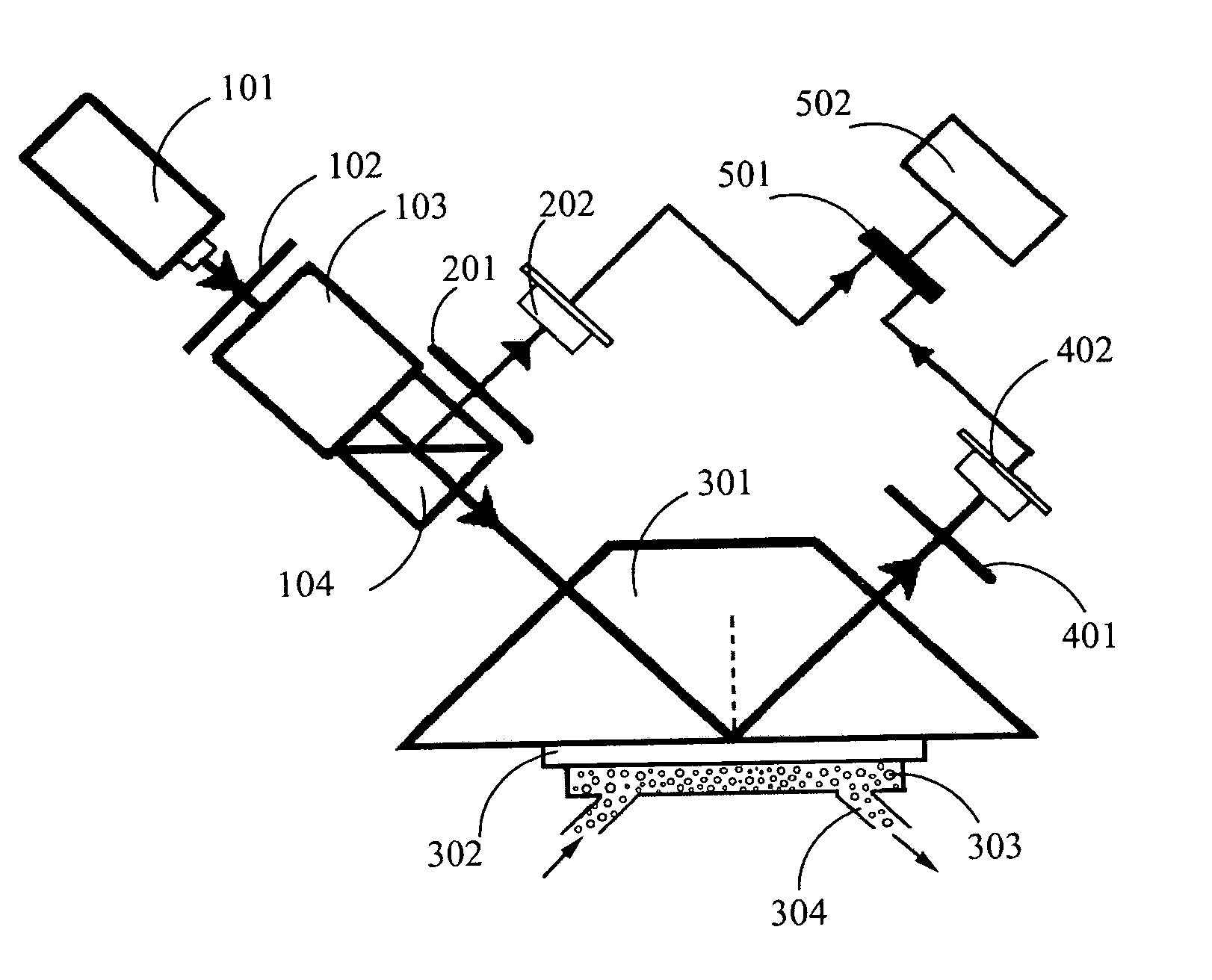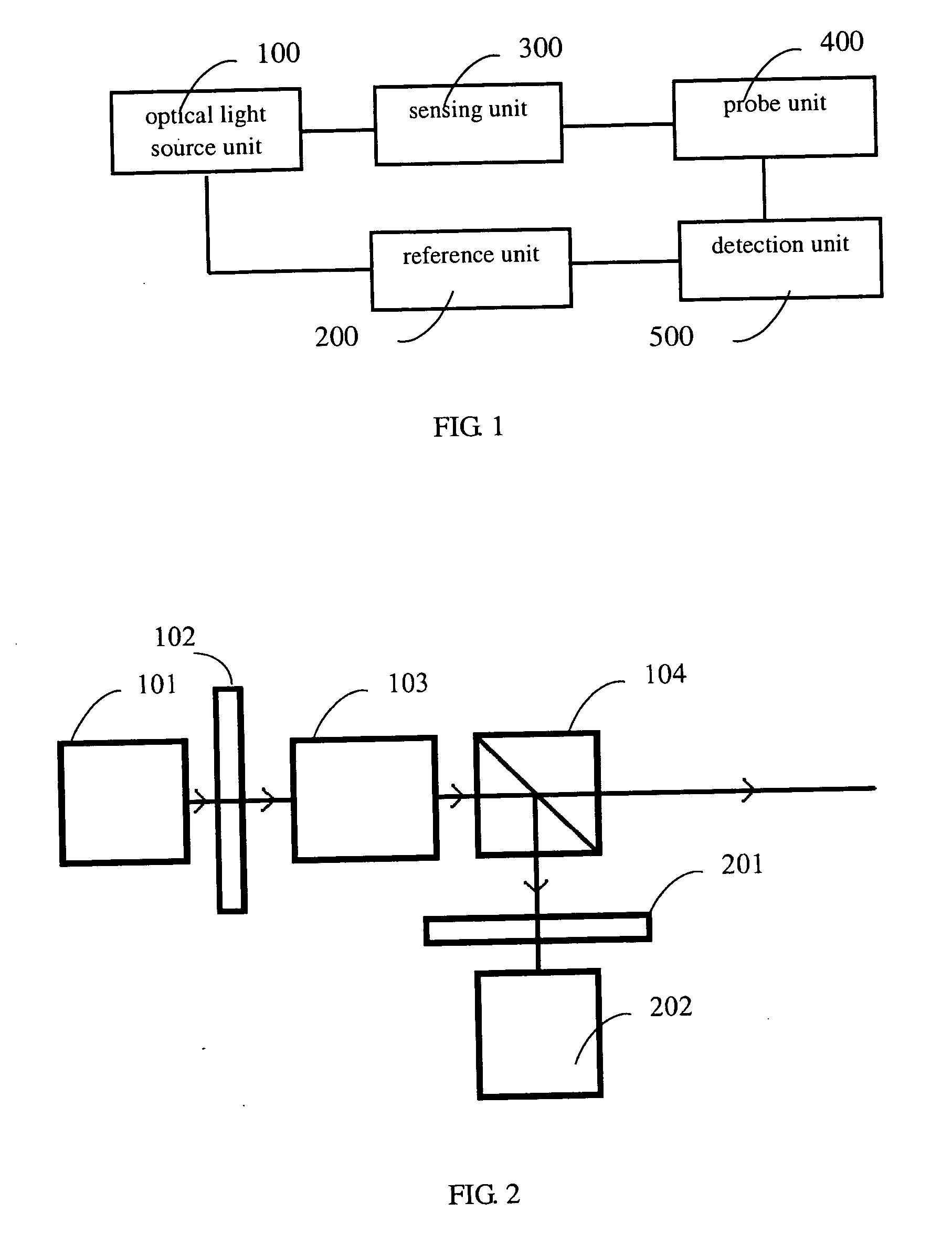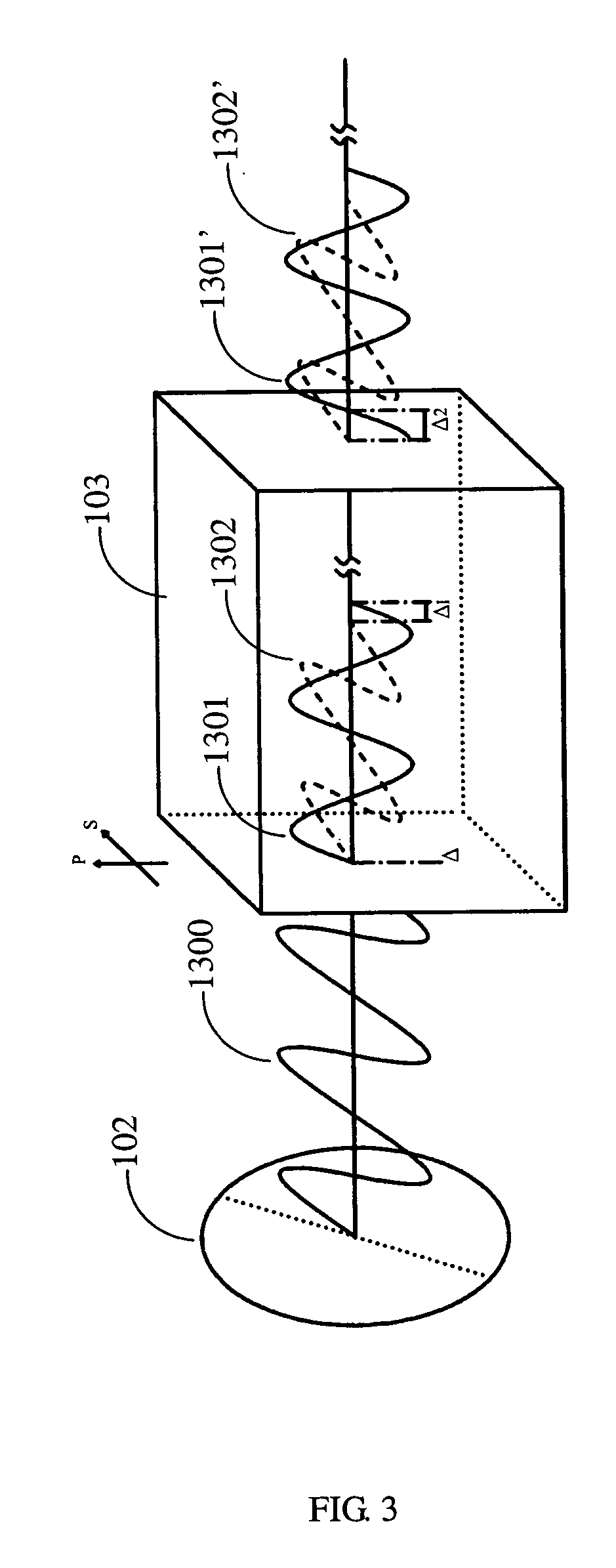Surface plasmon resonance sensors and method for detecting samples using the same
a surface plasmon and sensor technology, applied in the field of optical sensing devices, can solve the problems of inertia of system complexity and cost, complicated design in optical and electronic sections, and inability to detect samples using the same, so as to reduce system hardware complexity, improve sensing accuracy, and simplify the effect of optical setup
- Summary
- Abstract
- Description
- Claims
- Application Information
AI Technical Summary
Benefits of technology
Problems solved by technology
Method used
Image
Examples
first embodiment
[0040] As shown in FIG. 4a, the LCM comprises one liquid crystal layer 1031. In this embodiment, a thickness, d, of the liquid crystal layer 1031 should be configured large enough to achieve a sufficient modulation depth of the phase retardation, which thereby requires a larger drive voltage and a further reduction in frequency response.
second embodiment
[0041] As shown in FIG. 4b, the LCM comprises two or more liquid crystal layers 1032 stacked together to form a multi-layered LCM 1033. This embodiment does not need a larger drive voltage, but requires several liquid crystal layers.
third embodiment
[0042] The configuration of the LCM is described as shown in FIG. 4c. The LCM 1037 of this embodiment comprises a liquid crystal layer 1036 disposed between two mirrors 1034 and 1035. The position of the mirrors 1034 and 1035 is carefully configured so that the light can pass through the liquid crystal layer 1036 several times due to the reflection between the mirrors, which can thereby enhance the phase retardation. According to this embodiment, the modulation depth actually depends on the number of times that the optical beam passes through the liquid crystal layer 1036.
[0043] Measured signal traces according to both single pass and multi-pass methods are shown in FIG. 6a and FIG. 6b, respectively. It is understood from the figures, the multi-pass method has a high efficiency and a simple structure, which is demonstrated in the present invention. The triangular waveform shown in FIGS. 6a and 6b correspond to the drive voltage of the LCM 1031 and 1037, respectively. In the case of ...
PUM
| Property | Measurement | Unit |
|---|---|---|
| frequency | aaaaa | aaaaa |
| frequency | aaaaa | aaaaa |
| frequency | aaaaa | aaaaa |
Abstract
Description
Claims
Application Information
 Login to View More
Login to View More - R&D
- Intellectual Property
- Life Sciences
- Materials
- Tech Scout
- Unparalleled Data Quality
- Higher Quality Content
- 60% Fewer Hallucinations
Browse by: Latest US Patents, China's latest patents, Technical Efficacy Thesaurus, Application Domain, Technology Topic, Popular Technical Reports.
© 2025 PatSnap. All rights reserved.Legal|Privacy policy|Modern Slavery Act Transparency Statement|Sitemap|About US| Contact US: help@patsnap.com



